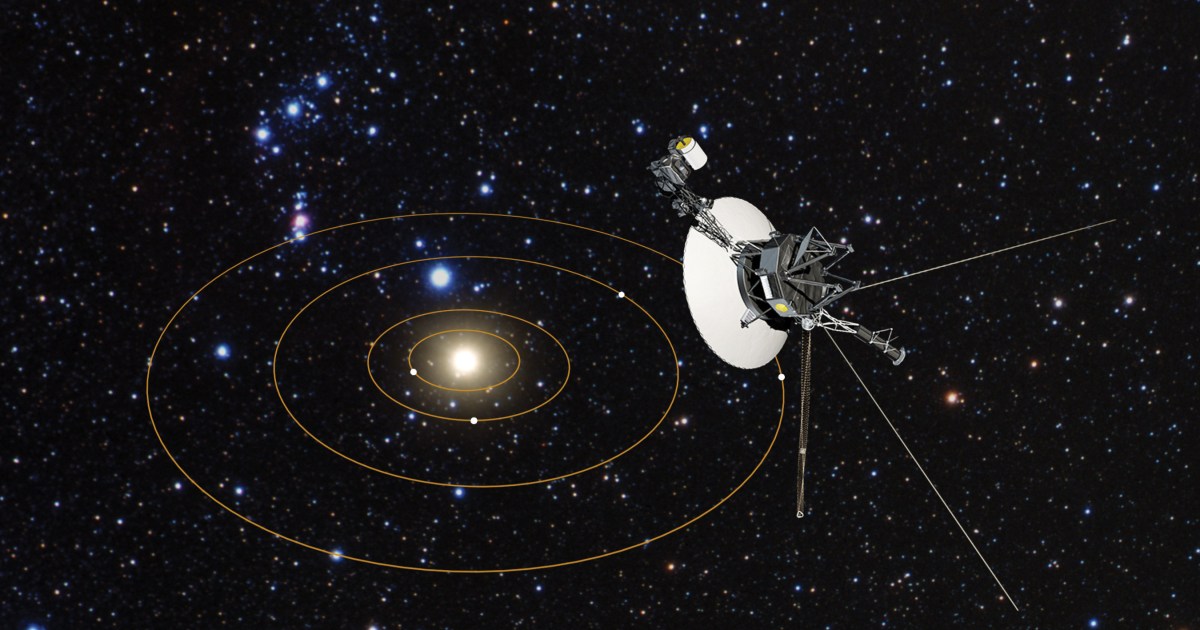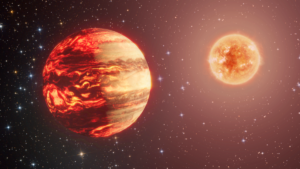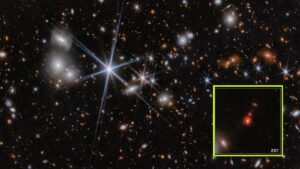On the scale of the universe, humanity is not even a speck of dust.
This vertically oriented logarithmic map of the universe spans nearly 20 orders of magnitude, taking us from planet Earth to the edge of the visible universe. Each large “tick” on the right scale bar corresponds to an increase in the distance scales by a factor of 10.
Each of us is just a small, miniature part of our own planet: Earth.

The Apollo 8 astronauts were the first people to reach far enough from our planet to see the entire Earth at once. Here, the closest (left) and farthest (right) images of Earth are shown as taken with the same Hasselblad camera. Except for the three people on board right now, all of humanity is confined to the pale blue dot on the right.
It would take almost an Avogadro number of people to equal the mass of the Earth.
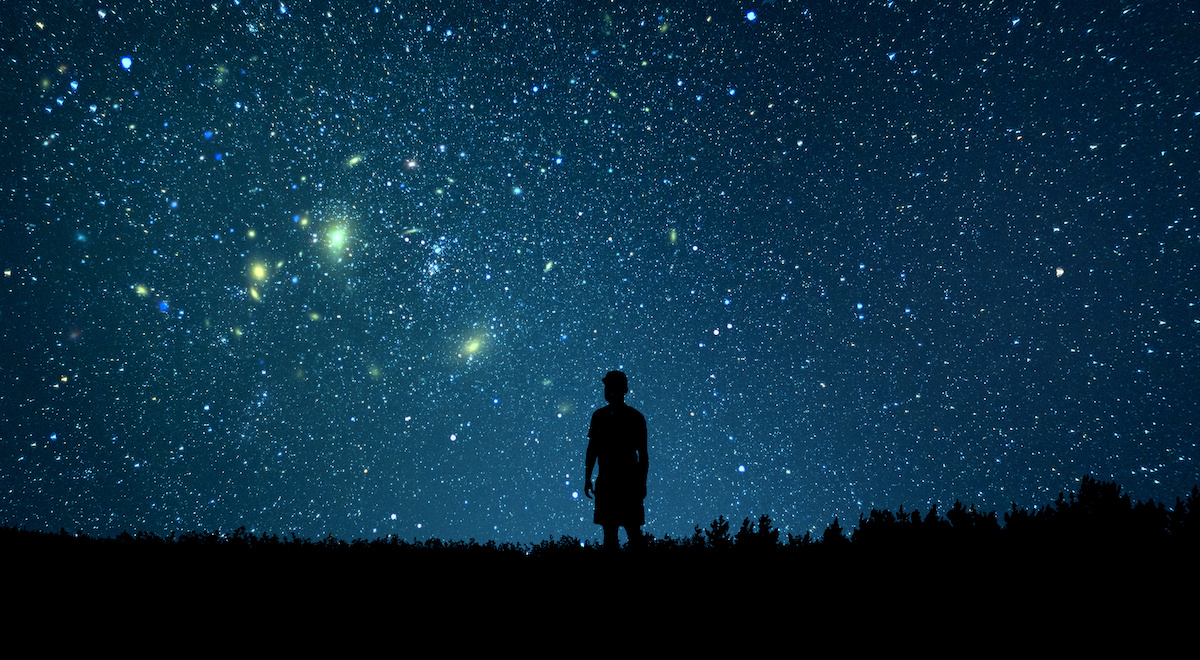
Under ideal dark-sky conditions, the unaided human eye can see up to 6,000 stars at once, and up to 9,000 stars in total if they can see the entire sky at once, unblocked by Earth itself. Compared to Earth, at ~6 septillion kilograms, all 8+ billion people combined are a mere drop in the bucket of the total mass of planet Earth.
Earth is just one humble planet orbiting our Sun: one of ~400 billion stars in the Milky Way.
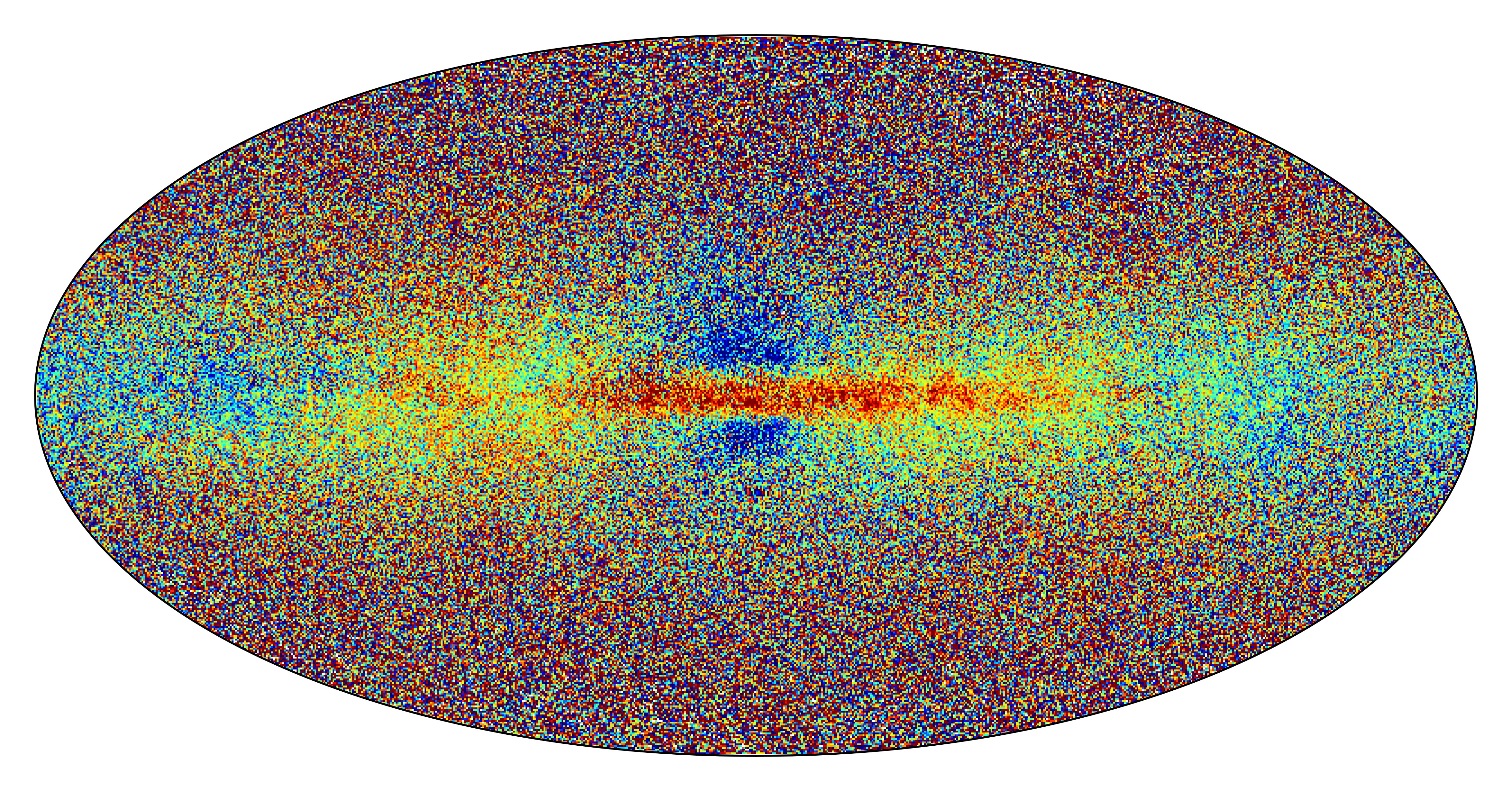
This color-coded map shows the heavy element abundances of more than 6 million stars in the Milky Way. Stars in red, orange, and yellow are rich enough in heavy elements to have planets; stars coded green and cyan should only rarely have planets, and stars coded blue or violet should have absolutely no planets around them. Note that the central plane of the galactic disk, extending all the way to the galactic core, has the potential for habitable, rocky planets. This map shows less than 0.01% of the stars in our galaxy.
Our Milky Way is second only to Andromeda in our local group of galaxies.
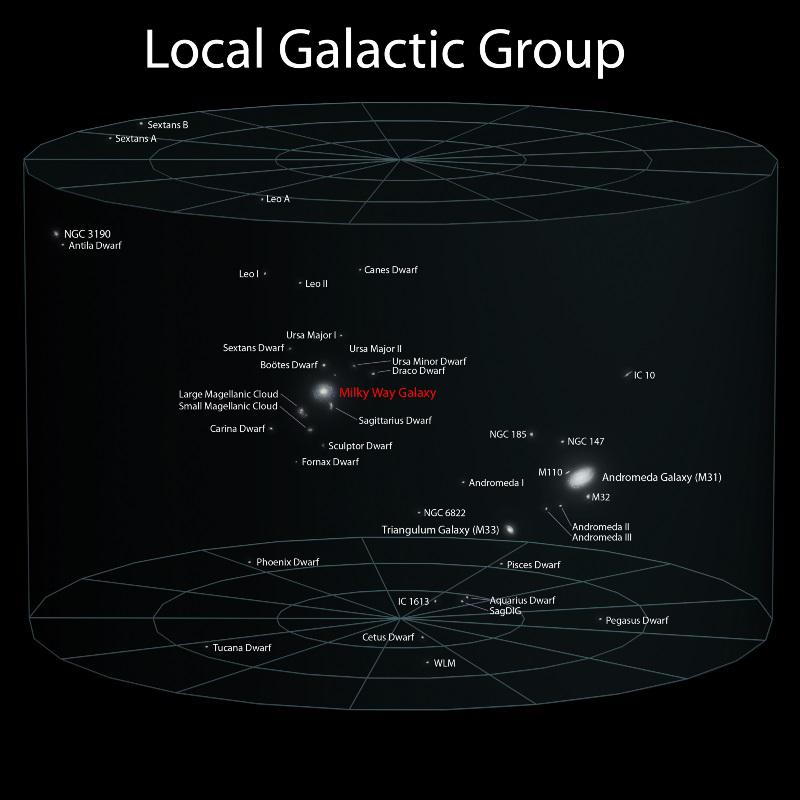
Our Local Group of galaxies is dominated by Andromeda and the Milky Way, but there’s no denying that Andromeda is the largest, the Milky Way is #2, the Triangle is #3, and the LMC is #4. Just 165,000 light-years away, it is the closest of the first 10+ galaxies to ours, and as such occupies the largest angular extent of the sky of any galaxy outside the Milky Way. There are over 100 galaxies in the Local Group, but Andromeda and the Milky Way contain most of the stars and most of the mass.
Beyond the Local Group, much larger, richer, more massive groups and clusters of galaxies abound.
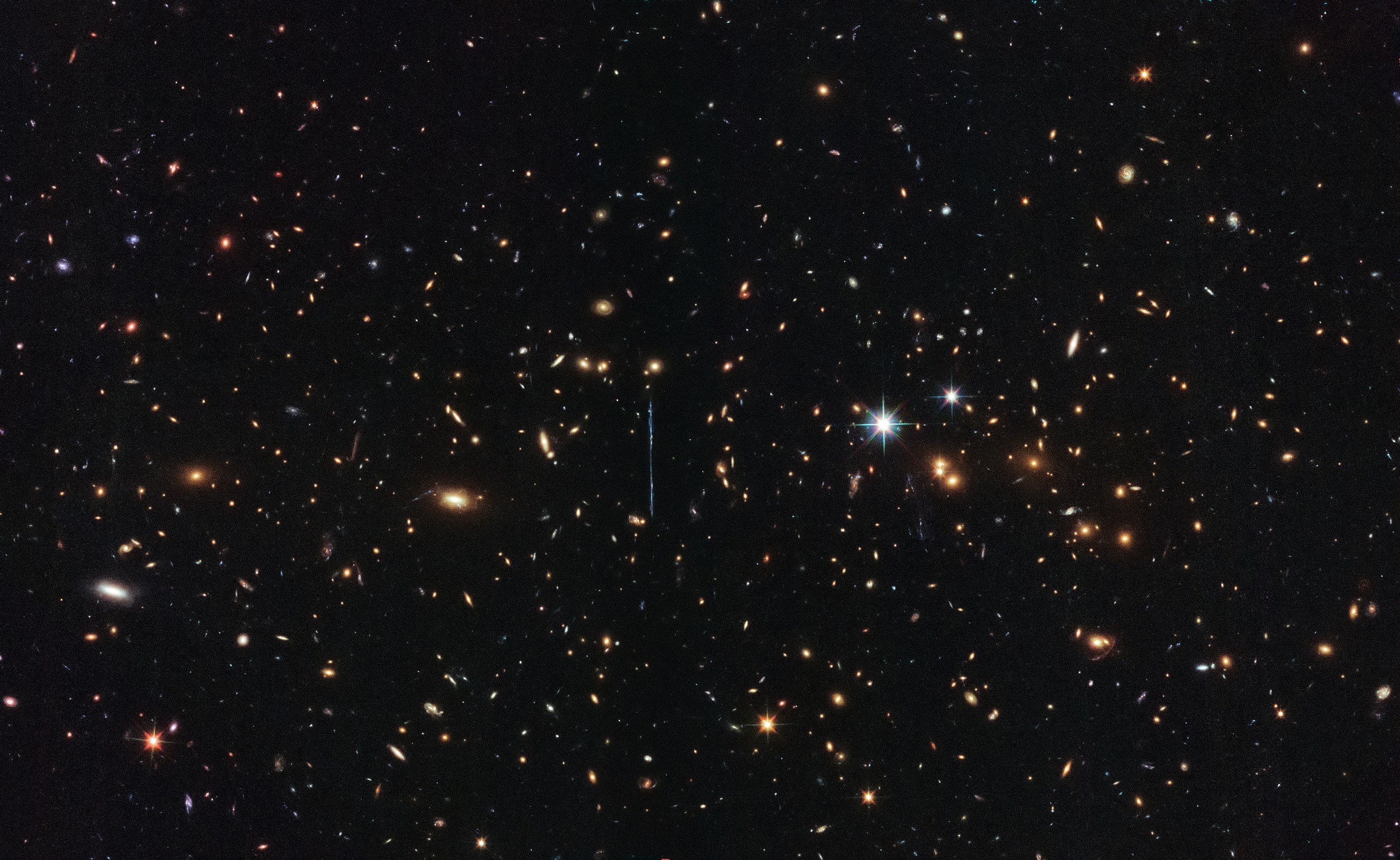
This 2014 Hubble composite image of the colliding El Gordo galaxy cluster shows the most massive galaxy cluster ever discovered from the first half of our cosmic history. Known officially as ACT-CLJ0102-4915, it is the largest, hottest and X-ray brightest galaxy cluster ever discovered in the distant Universe, containing thousands of times the mass of the Local Group.
A total of trillions of galaxies are scattered throughout the visible, expanding Universe.
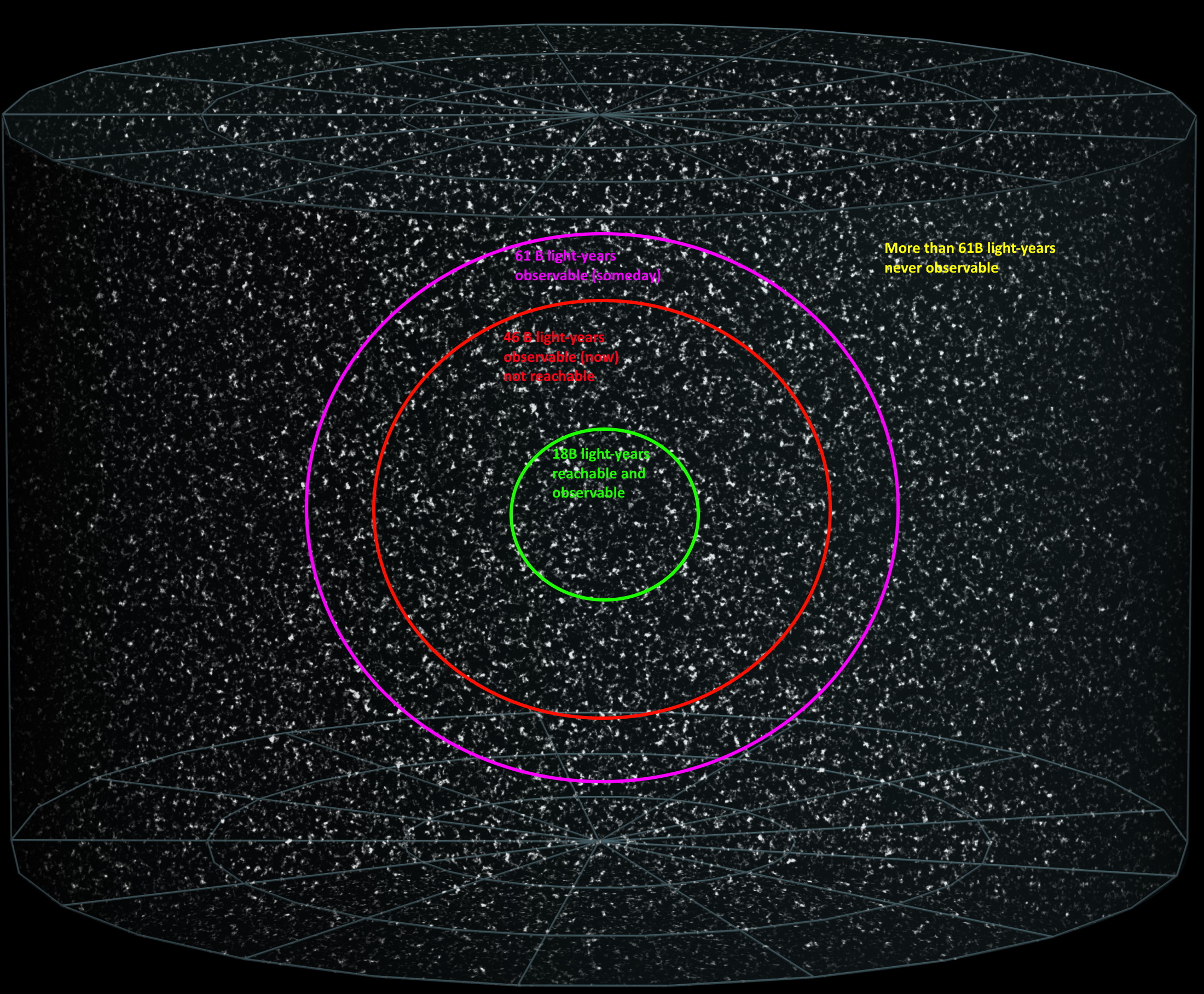
In a universe that is beginning to be dominated by dark energy, there are four regions: one where everything in it is accessible, transmitted and observable, one where everything is observable but unreachable and unobservable, one where things will someday be observed , but are not today and one where things will never be observed. The numbers shown correspond to our 2024 consensus cosmology, with boundaries of 18 billion light years, 46 billion light years, and 61 billion light years separating the four regions. On scales of ~10 billion light years and larger, the universe is almost perfectly uniform.
Thanks to dark energy, news of humanity’s greatest feats will never reach nearly everyone.
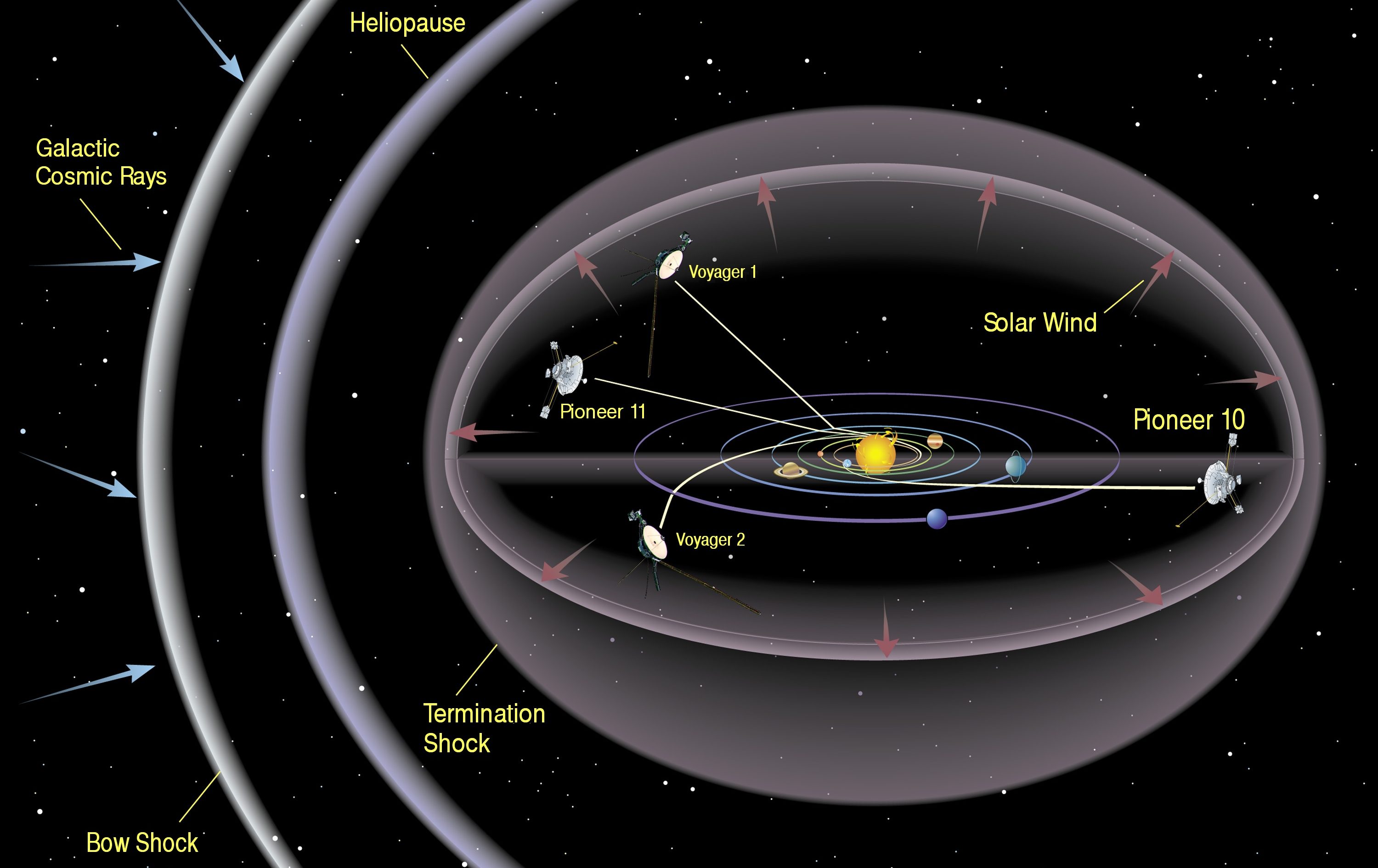
This artwork from 1997 shows the planets of the Solar System and the relative trajectories of the first four spacecraft on course to leave the Solar System. In 1998 Voyager 1 overtook Pioneer 10, and in 2012 it crossed the heliopause and entered interstellar space. Voyager 2 entered interstellar space in 2018 and recently surpassed Pioneer 10’s distance in 2023; therefore, we strongly suspect that Pioneer 10 is also in interstellar space, but is no longer operational, so we cannot make the critical measurements needed to make such a determination.
Yet, from another perspective, we are truly remarkable.
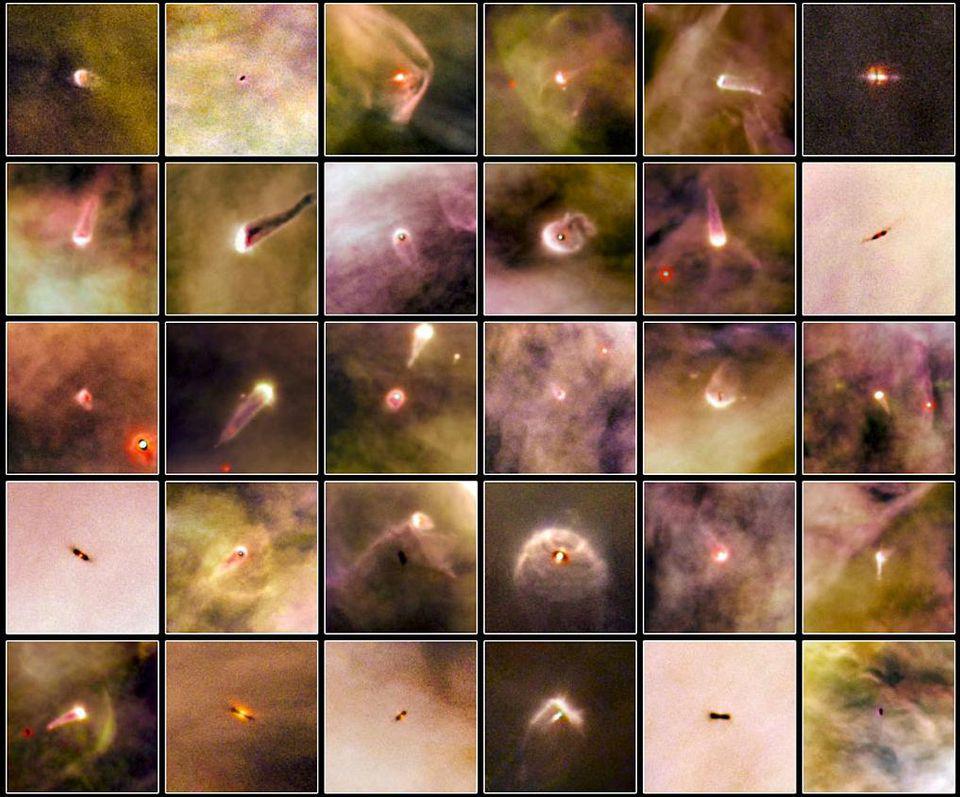
30 Hubble imaged protoplanetary disks or proplids in the Orion Nebula. Hubble is a brilliant resource for identifying these disc signatures in the optics, but has little power to study the internal features of these discs, even from their location in space. Radio telescopes like ALMA, as well as infrared observatories like the VLT and JWST, are much better at this aspect of measuring these details. Planets largely arise from protoplanetary discs, but different mechanisms may be responsible for different scenarios of planet formation at different distances from the parent star.
We inhabit a rocky world formed from ancient star ash.
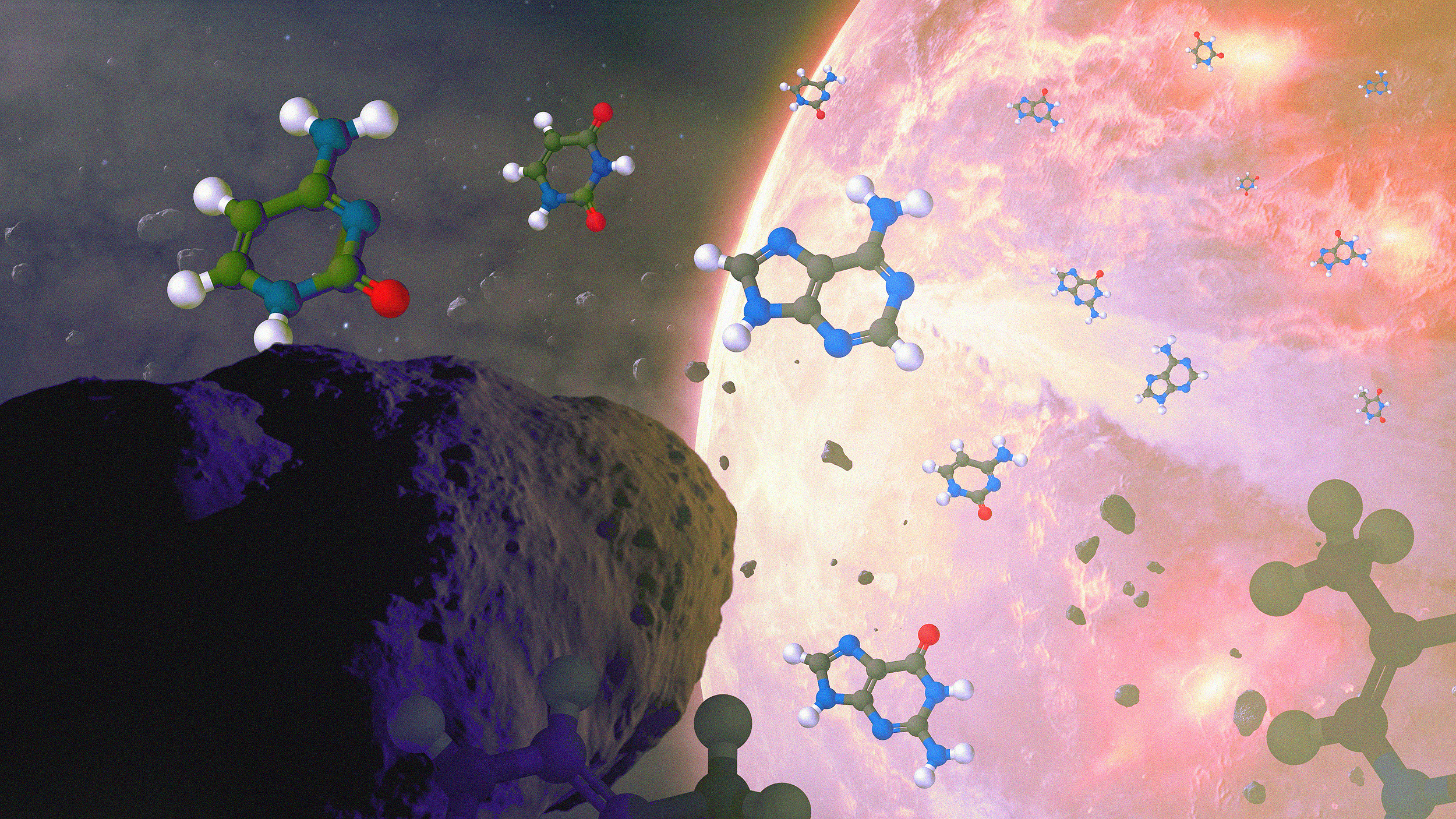
This concept image shows meteoroids delivering all five nucleobases found in life to the ancient Earth. All the nucleobases used in life, A, C, G, T and U, have already been found in meteorites, along with more than 80 types of amino acids: far more than the 22 known to be used in life here on earth. Similar processes have undoubtedly occurred in star systems everywhere in most galaxies throughout cosmic history, bringing the raw materials for life to all sorts of young worlds.
For about ~4 billion years, continents and oceans existed on Earth’s surface.
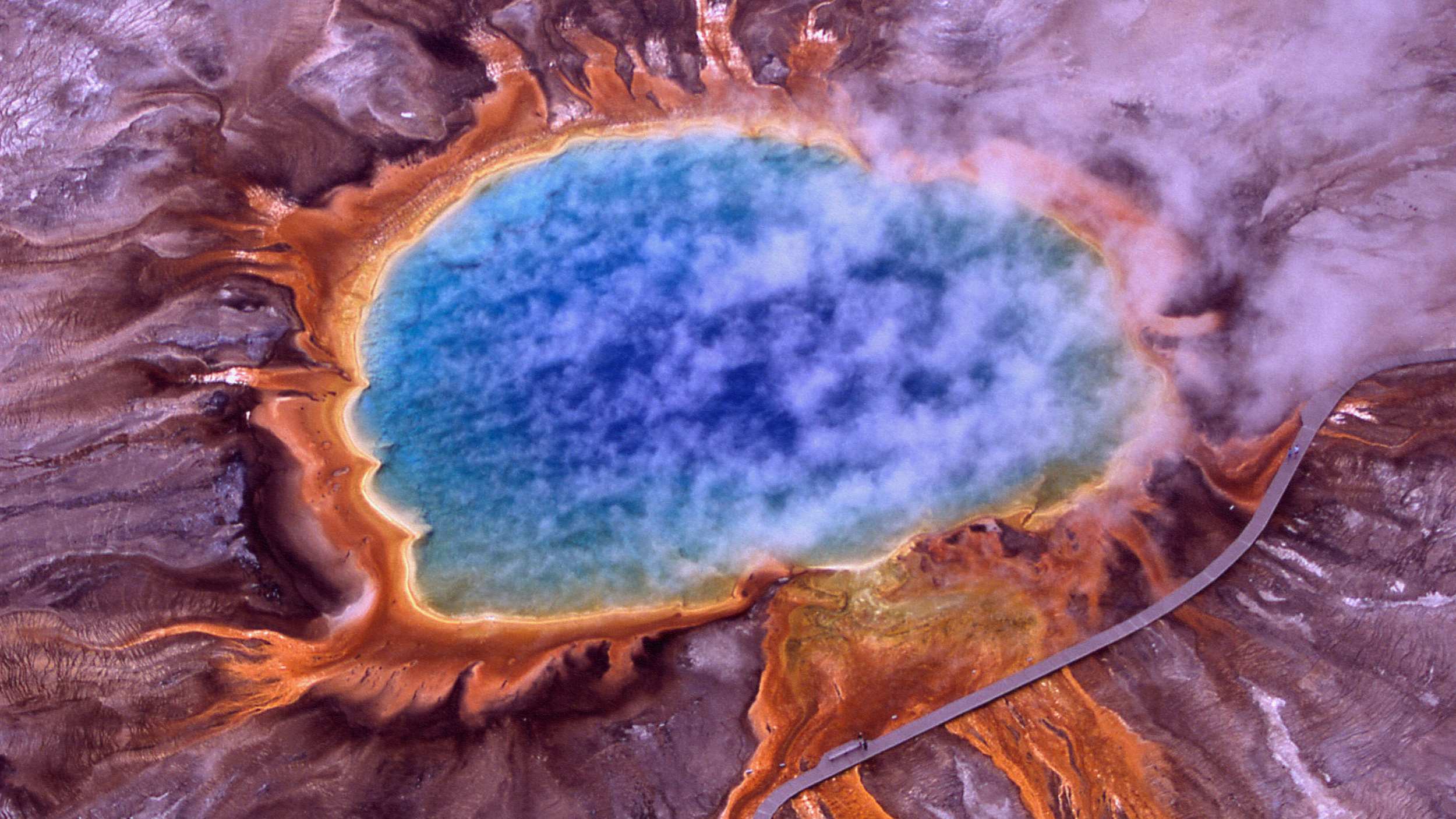
This aerial view of Grand Prismatic Spring in Yellowstone National Park is one of the world’s most iconic land-based hydrothermal features. The colors are due to the different organisms living in these extreme conditions and depend on the amount of sunlight that reaches the different parts of the springs. Hydrothermal fields like this are some of the best candidate sites for life to originate on a young Earth and may be home to abundant life on various exoplanets.
Life appeared early on Earth, surviving and thriving ever since.

This scanning electron microscope image shows several specimens of the cyanobacterium species Prochlorococcus marinus. Each one of these organisms is only about half a micron in size, but all together cyanobacteria are largely responsible for creating oxygen on Earth: both originally and largely even today. Like all bacteria, their lifespan is much, much shorter than that of humans, and while cyanobacteria are relatively primitive organisms, they date back “only” to no earlier than 2.7 billion years ago, while life on Earth dates back at least billions of years beyond that.
Multicellularity, sexual reproduction, complexity, and high levels of differentiation eventually emerged.
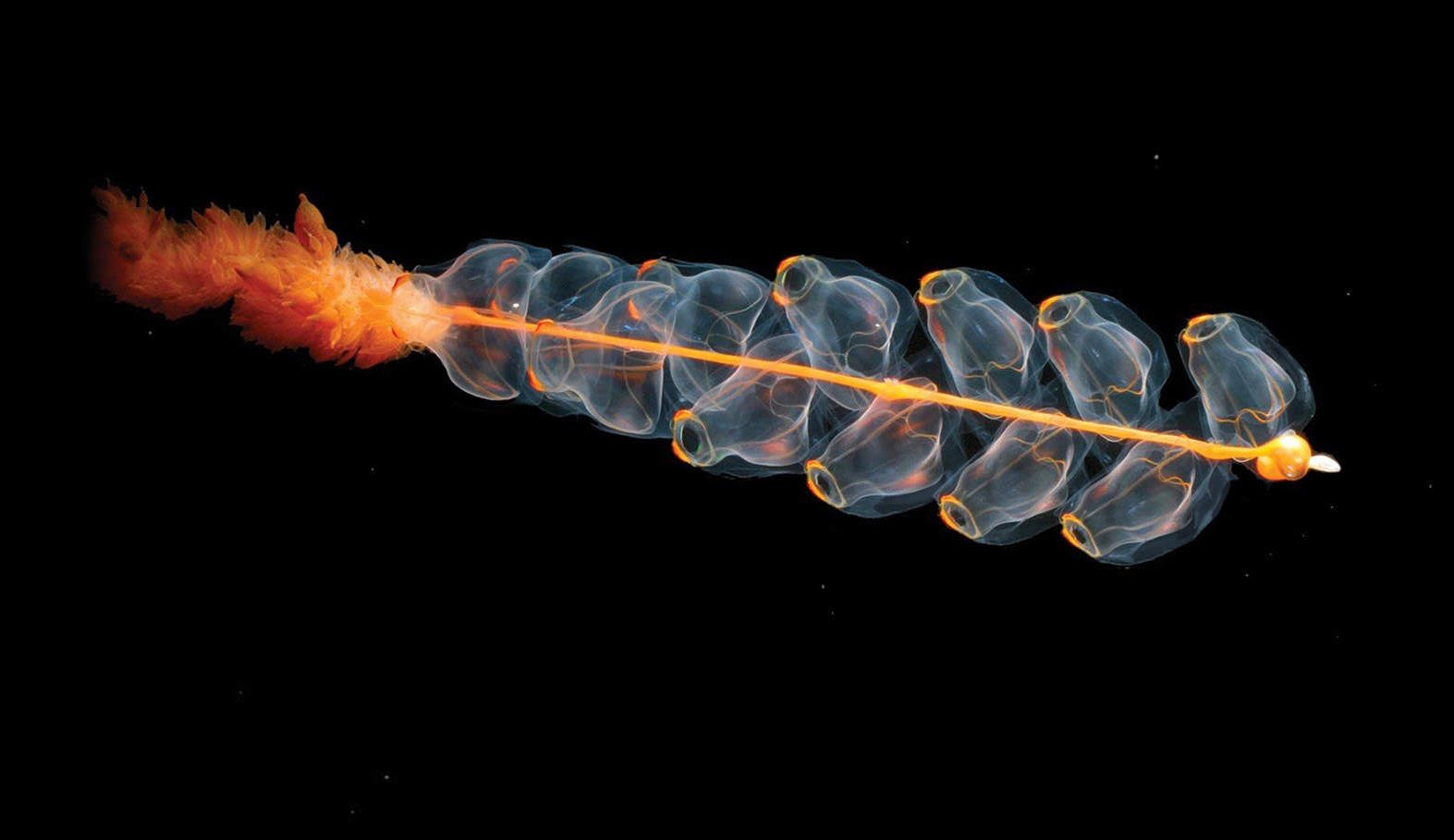
A fascinating class of organisms known as siphonophores is itself a collection of small animals that work together to form a larger colonial organism. These life forms straddle the line between a multicellular organism and a colonial organism. The ability of individual life forms to combine features such as multicellularity, complexity, and high levels of differentiation has led to the explosive diversity of life that has abounded on Earth over the past ~500 million years.
Within ourselves, one organ drives “thought” like no other: the human brain.

This drawing shows a variety of human, ape and ape skulls from various extant species. Older apes have smaller cranial capacity and smaller brains than humans, but stronger jaws on average. To evolve large brains, jawbones had to weaken: an adaptation to loss of function. Modern humans have the highest encephalization ratio of any known animal, followed by dolphins and then, more distantly, chimpanzees and some birds.
After 13.8 billion years, civilized humans finally understand our Universe.
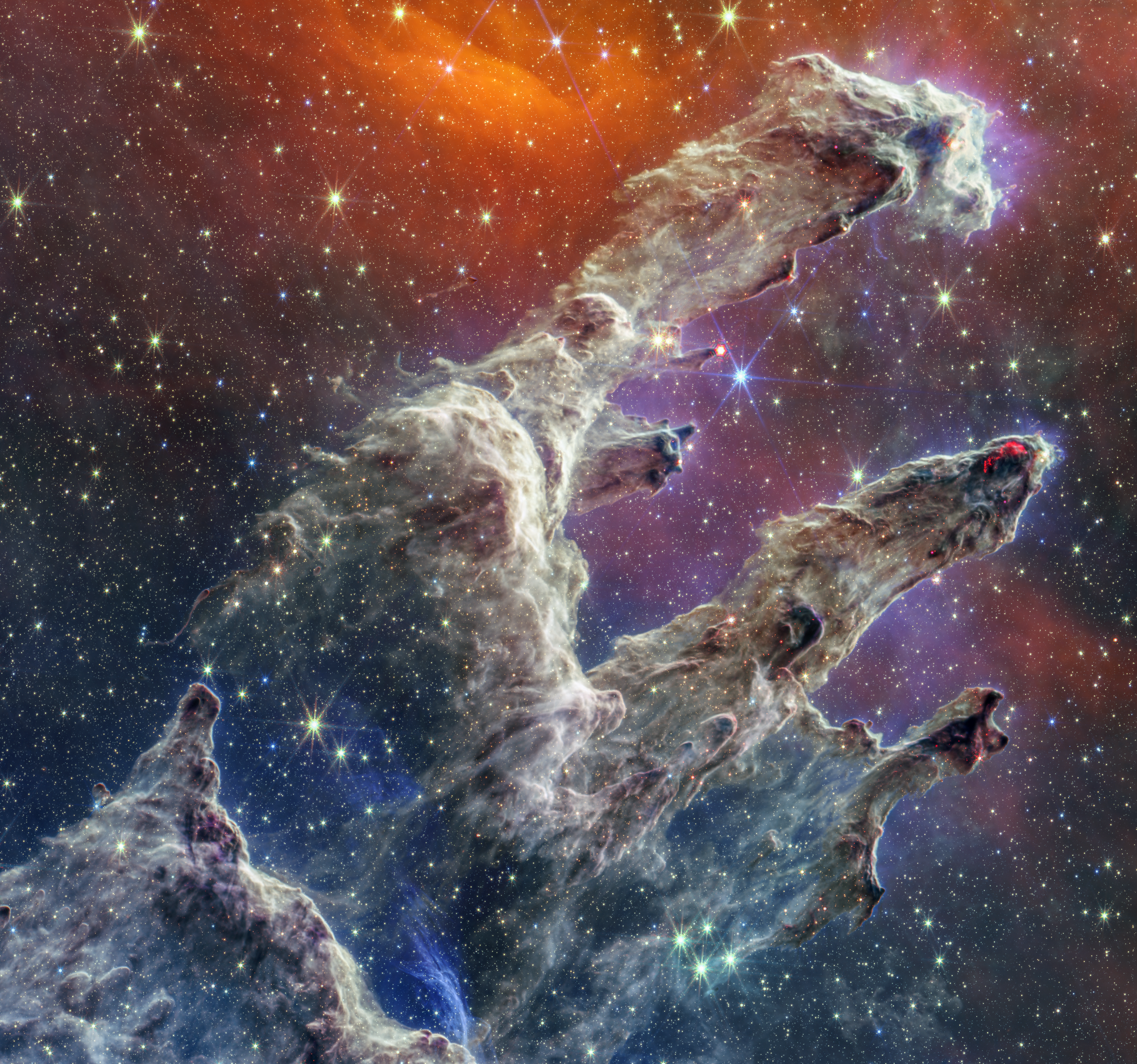
This colorful view of the Pillars of Creation uses a large set of JWST data, showing the faint and transient nature of these neutral gas features. Stars form in nebulae like this, but once the gas evaporates, all they can do is burn through their fuel until they die.
Humanity’s imagination, creativity and intelligence remain unparalleled.

This museum exhibit shows Deep Blue: the computer that first defeated a reigning world chess champion in a chess match, defeating Garry Kasparov. Since Ruslan Ponomarev beat Fritz in 2005, no human has beaten a computer with the best scores in a game of classical chess.
Maybe one day we will appreciate our achievements enough.

Although many claim that the advent of quantum computing will speed up computing worldwide compared to classical computers, this is extremely unlikely to be the case. Instead, the best computers will be hybrids: able to use the quantum part for applications where a quantum advantage can be achieved, but resorting to classical computing techniques for all other (i.e. most) applications.
Primarily, Mute Monday tells an astronomical story in images, visuals and no more than 200 words.
